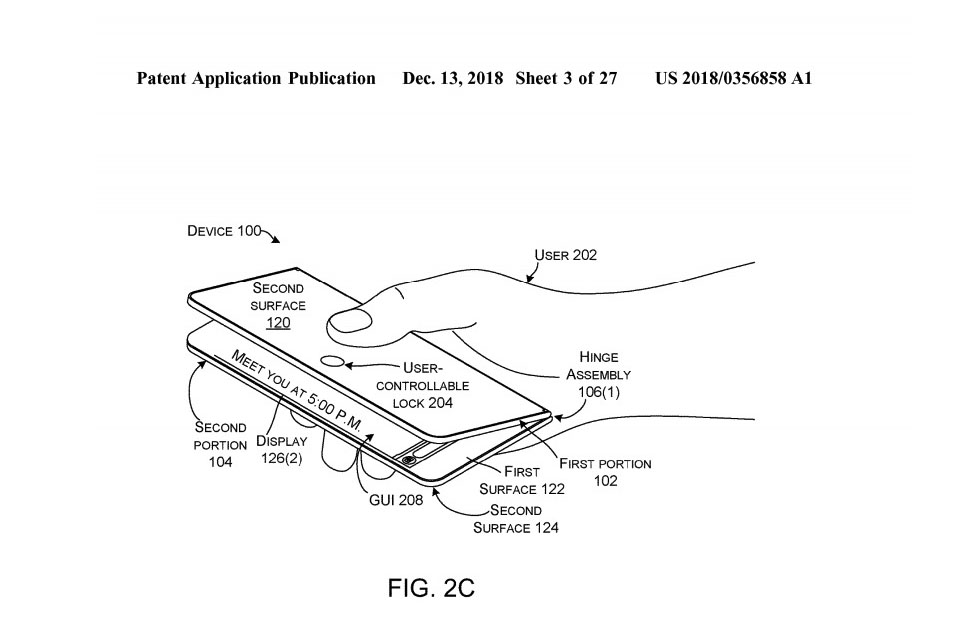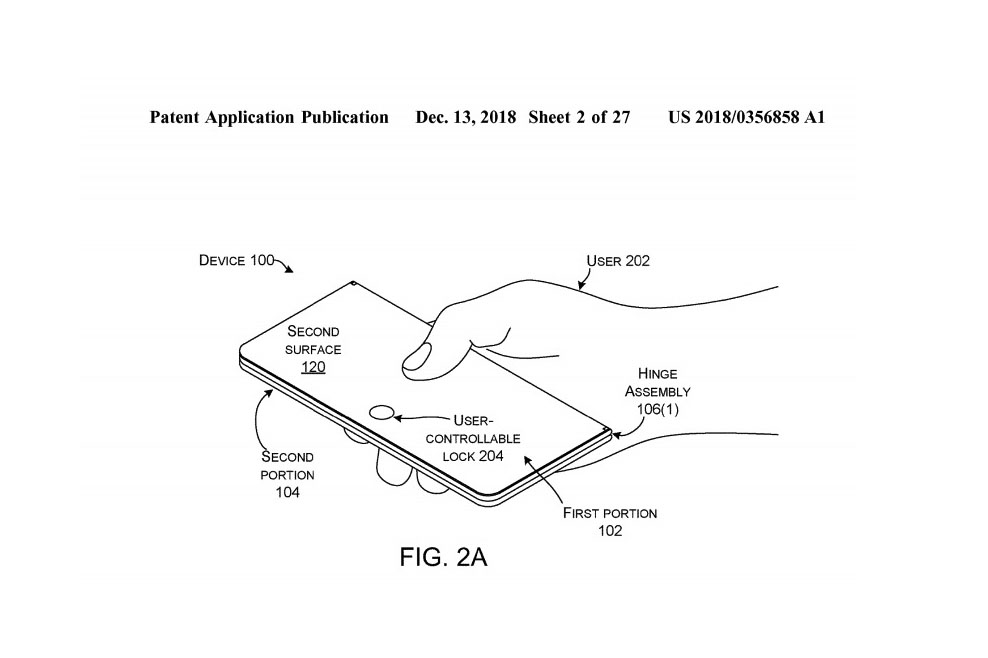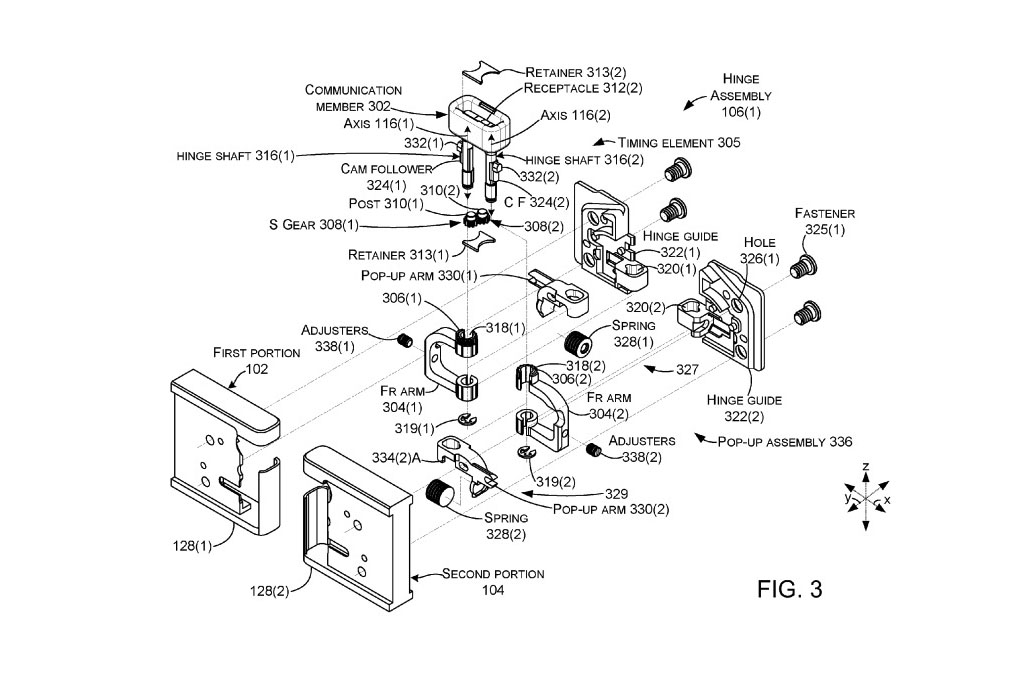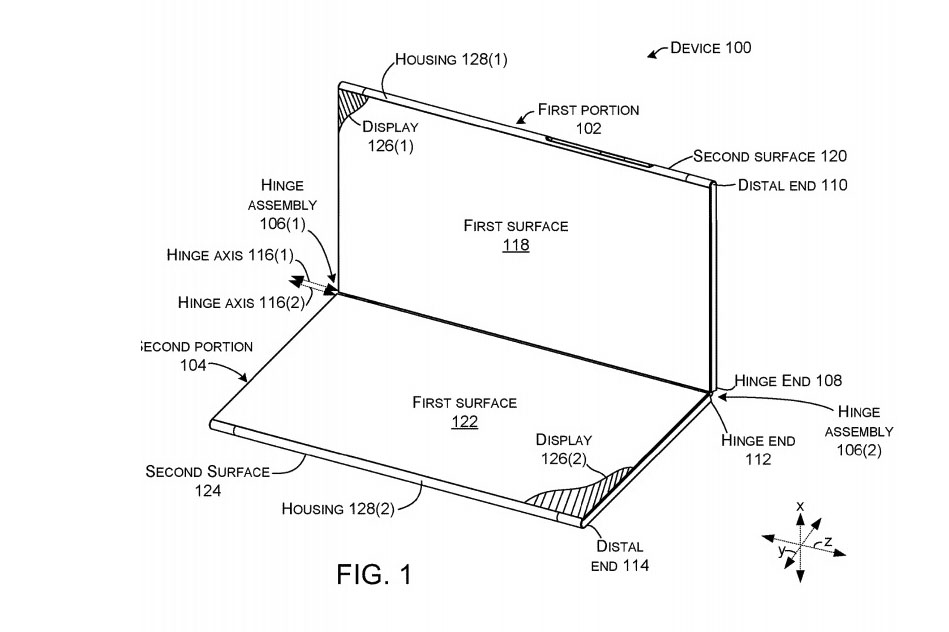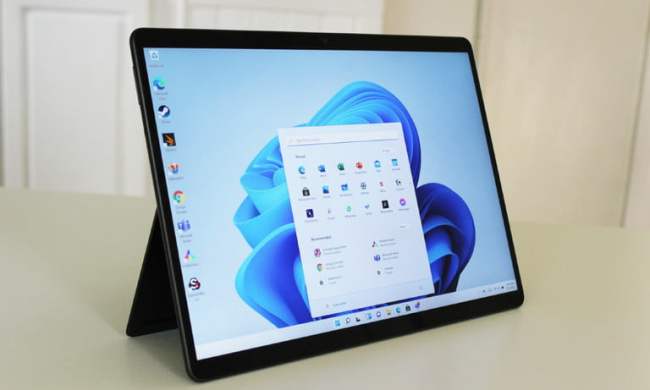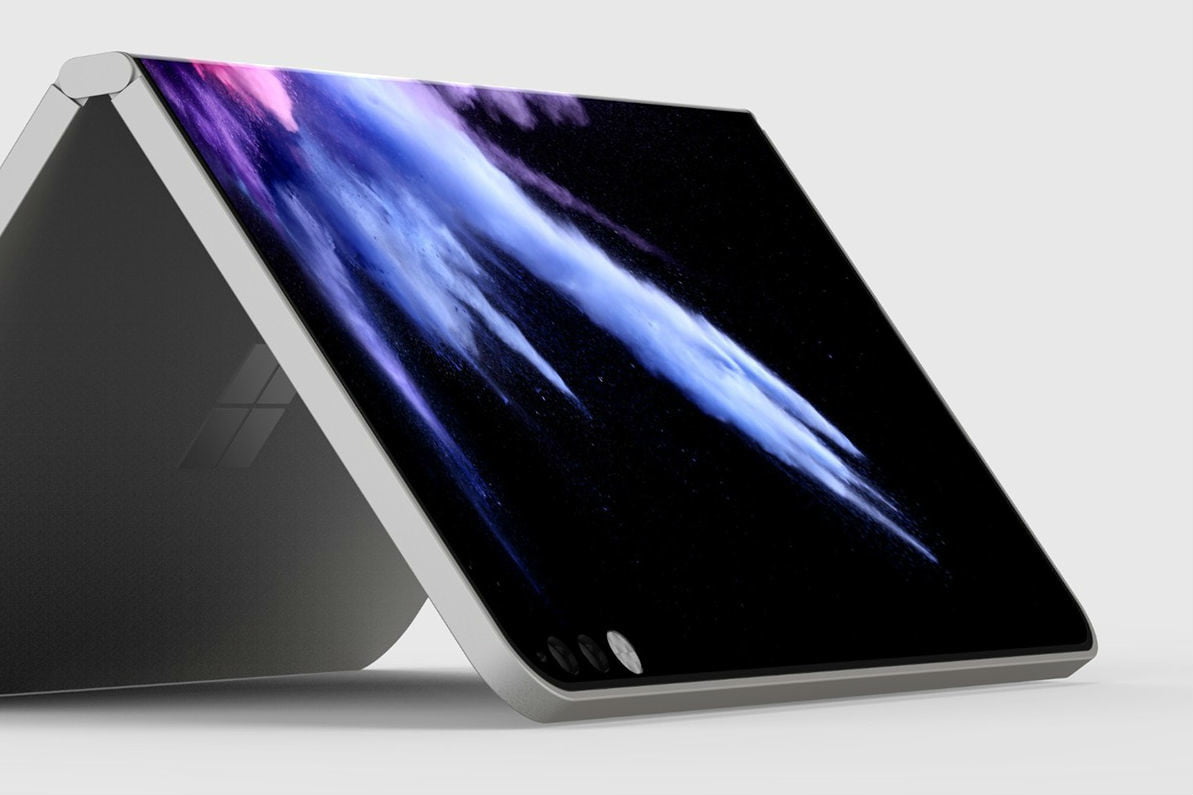
A new foldable hinge patent has emerged that could shed additional light on Microsoft’s rumored, and supposedly upcoming, Andromeda dual-screen computer. The patent itself details a newly designed locking hinge mechanism that allows a clamshell style device to be popped open easily with a single hand. Language within the patent notes that the hinge is to be used with computing devices, showcasing a hand-sized mobile device with dual screens.
Whether attempting to fit a foldable screen into your pocket, or merely a dual-screen device, adding additional screen real estate to the small gadgets that we place in our pockets appears to be a target for many companies including Samsung, Microsoft, and LG. Microsoft, in particular, has had many rumors surrounding both the Andromeda dual-screen computer and a larger, dual-screen Surface tablet currently code-named Centaurus.
Imagery for the new Microsoft patent focuses on the particular design of the hinge, outlining a little construction featuring a pop-up arm and friction arms to support careful articulation. Notable is the inclusion of a button within the illustrations that show how a user might be able to release the hinge and pop the mechanism ope with a single click, making the hinge ideal for mobile devices that might need to be operated with a single hand.
Microsoft’s Andromeda device has seen some patents leak detailing how the dual-screen pocket computer might be operated. Despite the information, we know little apart from the idea that the device will likely contain dual screens, an onboard processing chipset, along with microphones and cameras built into the housing. Additionally, patents have shown that the invention is likely to operate in conjunction with the Surface Pen.
The road map supported by the discovery of the patents doesn’t appear to be too far off the path from something we would expect as Intel continues to push its dual-screen 2-in-1 form factor of the future. Lenovo’s Yoga Book C930 is likely the best currently available option that showcases the future of two-screen devices that companies seem to have their eyes firmly set. As we move forward into 2019, we hope to see more developments, and perhaps a reveal, from the team at Microsoft.
